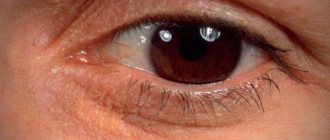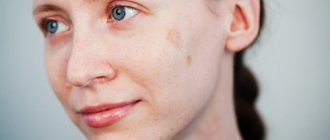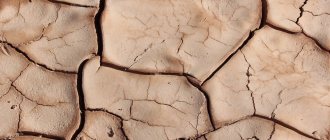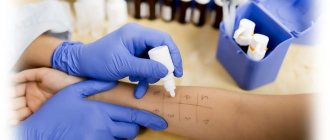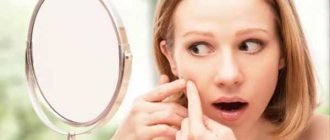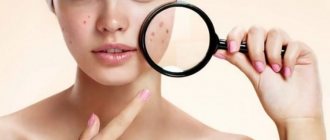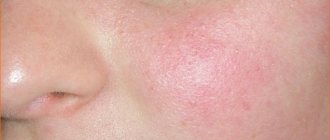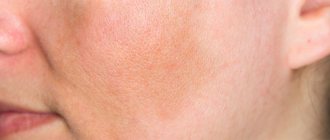Defects on the face, décolleté and other open areas cause aesthetic discomfort to people. Pigment spots on the neck are common. If you find them, do not panic; the spots can be treated or removed. But first they find out what factors provoked their appearance.
Why do age spots appear?
All factors that can lead to the formation of excessive pigmentation in the neck area can be divided into 2 groups: endogenous (internal) and exogenous (external). Also, the reasons for this phenomenon differ, depending on the age at which excessive pigmentation occurred.
Causes of occurrence in adults
The most common reasons for the development of this pathology in adulthood are the following factors:
- exposure to ultraviolet rays. As a result, the production of melanin (pigment) in limited areas of the skin is activated.
- changes in hormone levels. Pigment spots on the neck appear especially often during pregnancy and breastfeeding.
- age-related changes. The peak appearance of pigmentation occurs at the age of 40-50 years. During this period, not only the hormonal background changes, but also changes occur in metabolism (this also applies to the production of melanin).
- use of low-quality skin care products. Often, hygienic cosmetics provoke inflammatory and allergic diseases, which lead to the formation of scars and age spots.
- chronic inflammatory diseases of internal organs. Chronic pathologies of the nervous, endocrine and digestive systems can also lead to disruption of the synthesis and breakdown of pigments.
Factors that provoke the appearance in children
The protective functions of a child’s skin are weaker than those of an adult, which is why pigment spots may appear more often. The most common causes of pigmentation on the neck in children include the following factors:
- hereditary predisposition. It has been revealed that the tendency to disturbances in melanin synthesis may be genetically determined.
- intrauterine pathologies of the development of the circulatory system;
- congenital and acquired immunodeficiencies. In such conditions, there is a risk of developing antibodies against one’s own cells – melanocytes. As a result, areas of depigmentation (white pigment spots) appear.
- hypovitaminosis and insufficient intake of minerals from food. Among infants, hypovitaminosis most often occurs in those who are bottle-fed or mixed-fed. In older people, hypovitaminosis often appears in winter and spring.
- pregnancy pathologies. If the mother suffered from infectious diseases during pregnancy, and also had bad habits, the risk of developing pigmentation in the child increases several times.
- chemical, mechanical and physical agents. These factors that affect the skin from the outside can disrupt the protective functions of the skin and the production of melanin.
In most cases, it is difficult to determine the main factor that led to the appearance of hyperpigmentation on the neck. Also, the causes of age spots in children can also affect the adult body - sometimes they affect the body for a long time.
How to get rid of pigmentation
There are different ways to get rid of brown spots on your neck. Cosmetic procedures are effective.
- Cryotherapy. A nozzle is placed on the pigmented area, which emits cold nitrogen. As a result, metabolic processes are improved and the functioning of melanocytes is normalized.
- Laser correction. A beam of a certain frequency causes detachment of the damaged layer of the epidermis.
- Dermabrasion. A special brush mechanically removes the painted layer. After the procedure, the skin may become inflamed, which causes new spots to appear.
- Mesotherapy. Through injections, medications are introduced into the dermis that have a beneficial effect on melanin.
- Phototherapy. Exposure to special light waves allows you to remove excess pigment and neoplasm.
- Ultrasound. Special medications are applied to the skin and delivered to the desired depth using ultrasonic waves.
- Chemical peeling. Dark areas are treated with acids, after which the skin will peel, itch and cleanse. A method similar to dermabrasion, but with a gentle effect.
ethnoscience
Natural ingredients will help remove dark spots on the décolleté and neck. No. 1. Chop a medium-sized cucumber on a fine grater, wrap in gauze, and apply to the affected area for 10 minutes. The compress should be repeated daily for 2 weeks.
We recommend reading
- Why do brown spots appear on the face?
- Features of the localization of brown spots on the skin
- Causes of darkening of nipples during pregnancy
No. 2. Lemon juice in the amount of 1 tbsp. l. connect with 2 tbsp. l. hydrogen peroxide. Soak a cotton swab in the prepared solution and apply it to the pigment. Start with 5 minutes, gradually increasing.
No. 3. Grind a bunch of parsley to a paste, add 1 tsp honey to it. Apply the mask for 15 minutes. Remove residues with warm water.
A homemade folk recipe for lightening will be effective if you comply with an important condition - regular use. It takes at least a month to get rid of the cosmetic defect. The period varies depending on the individual characteristics of the skin and color intensity.
Pharmacy products
To whiten stains and prevent their reappearance, you can use medications for internal and external use. Funds from the following categories will help:
- zinc-based ointments to restore the natural functions of the skin;
- acid-based masks and creams;
- Ascorutin tablets;
- lotions, creams and ointments with vitamin A to improve regenerative processes;
- whitening creams.
Pigmentation on the neck: basic forms
In adulthood, the following forms of age spots most often occur:
- lentigo. There are solar and senile lentigo. Senile lentigo occurs against the background of age-related changes, and solar lentigo occurs due to the action of ultraviolet radiation. The spots can vary in size (from a few millimeters to several centimeters), as well as in color (from dark beige to light brown).
- chloasma. These are small pigment spots that are located in groups; the color can also vary. They often appear during pregnancy, in the neck and décolleté area.
- pityriasis versicolor. This disease is caused by the activation of opportunistic flora (fungi that normally live on the surface of the skin). It often occurs in the summer (since fungi multiply in a warm and humid environment), when immunity decreases. The clinical picture is represented by small dark or, conversely, hyperpigmented areas, usually on the posterior surface of the skin.
- vitiligo. A disease that, according to scientists, develops due to the production of autoimmune antibodies (directed against melanocytes). As a result, these cells are destroyed in local areas, which leads to complete or partial depigmentation.
The following types of pigmentation disorders are most often recorded in children:
- freckles (ephelids). These are small dark spots that are located in groups. They often occur during periods of increased exposure to UV rays (summer, spring) and are localized on the face, neck, shoulders, and décolleté.
- nevi (moles, birthmarks). Typically appear in utero or in the first few years of life. The danger of their occurrence on the neck is the increased risk of injury due to friction with clothing.
- juvenile lentigo. In most cases, it occurs during puberty, you can notice small pigment spots of light brown color, which, as a rule, disappear without a trace closer to 20 years.
- telangiectasia. This is a persistent dilation of subcutaneous capillaries and other small vessels. Red spots are observed - they often appear in premature babies, as well as during difficult births.
- medial spots of newborns. Localized on the back of the neck or on the back of the head. They are usually light pink in color, but may also turn red (during breastfeeding or physical activity). Disappear without a trace within a few months or years.
- hemangiomas. Red spots that form as a result of increased proliferation of blood vessels in a particular area of the body.
For more information about pigmentation in children, read this article.
Prevention of occurrence
In the future, preventive measures will help prevent the appearance of new pigmented areas:
- eat foods containing large amounts of microelements and vitamins;
- Visit a dermatologist regularly if you have dark spots;
- use sunscreen milk, lotion, face cream half an hour before going outside during periods of active sun;
- protect your skin from direct ultraviolet rays;
- use only high-quality cosmetics;
- Do not overuse tanning in a solarium.
Doctors advise eating a lot of fruits with vitamin C and taking niacin during the cold season. The drug increases the chance of eliminating unclean dark pigment by summer.
Pigmentation on exposed areas of the body and face can occur at any time of the year, at any age. Every person has moles and birthmarks, but hyperpigmentation develops only in the presence of provoking factors. If you encounter a spotted phenomenon, take measures to prevent its further development. To whiten colored skin, use only safe home methods or cosmetic methods selected according to the complexity of the problem.
Symptoms
As a rule, the patient does not present any complaints other than the appearance of an area with impaired pigmentation. Despite the fact that there is no pain, burning or itching (symptoms that are observed in other dermatological pathologies), you should consult a doctor for a full diagnosis and treatment. It must be remembered that only a specialist can accurately determine the type of pigment spot. It is necessary to urgently consult a doctor if the pigment spot has become asymmetrical, has changed color and size, and its contours have become uneven.
Diagnostic measures
A dermatologist diagnoses this condition. At the appointment, he conducts an examination and questioning, collects anamnesis (life, illness, family, allergy). The doctor also notes the location of the spots, their size, color and shape, finds out when they appeared, and what could have triggered their formation. To make a final diagnosis, it is necessary to undergo a number of examinations:
- general blood and urine analysis;
- blood chemistry;
- dermatoscopy;
- skin biopsy;
- examination using a Voodoo lamp;
- culture of skin scrapings.
These studies help determine the type of pigment spot, as well as exclude other dermatological diseases.
Treatment: basic principles
The main principle of pigment spot treatment is an integrated approach. For this purpose, local treatment with the help of whitening cosmetics, traditional medicine methods and hardware cosmetology are used. However, these methods should be used with caution and only after consulting a specialist.
In adults
In adulthood, you can combine all types of treatment, but this must be done correctly and only under the supervision of a doctor. It is recommended to use medicinal cosmetics designed for skin prone to hyperpigmentation. These products contain natural and synthetic whitening components:
- kojic acid;
- ascorbic acid;
- tocopherol;
- niacinamide;
- hydroquinone;
- mercury;
- azelaic acid.
The advantage of this method is that such cosmetics are able to regulate the production of melanin - this prevents further pigmentation disorders.
To achieve quick results, hardware cosmetology is also used: chemical peels, cryotherapy (action with liquid nitrogen), laser removal. They have no effect on melanin synthesis, but only exfoliate the upper layers of the epidermis, which leads to the removal of age spots and rapid renewal of skin cells. Read more about hardware methods here.
In children
As a rule, all age spots that appear in childhood do not pose a danger, and more than 60% of them disappear on their own. Therefore, only symptomatic treatment is used. Since hardware treatment and the use of creams are prohibited until the age of 14-18, the use of traditional methods of treatment is recommended; the most effective recipes are here.
At home, you can prepare masks, lotions and balms based on natural whitening ingredients. Homemade whitening cosmetics typically contain the following ingredients:
- yeast;
- dairy products;
- lemon juice;
- cucumber;
- berries;
- soda;
- parsley;
- kiwi.
However, some of the above products are highly allergenic, so you should consult your doctor before using alternative medicine methods.
Folk remedies
Home remedies are included in complex treatment. They are combined, on the advice of a doctor, with other methods of getting rid of pigmentation. Folk remedies can eliminate small, faintly colored lesions.
Help to cope with the problem:
- Starch mask. Prepare a paste from freshly squeezed lemon juice and 1 tablespoon of starch. The product is distributed over the problem area. Wash off the paste after 25 minutes.
- Mask with parsley. Mix 1 tablespoon of mayonnaise with chopped herbs, spread on the pigment spot, and leave for 25-30 minutes.
- Cucumber mask. The vegetable is turned into a pulp, combined with nourishing cream in equal quantities. Place it on the problem area. Wash off after 25-30 minutes.
- Celandine. Boil 300 ml of water, pour 2 tablespoons of freshly picked herbs into the liquid. Leave to infuse for 1 hour. The product is filtered and used to wipe away age spots. Do 2 procedures per day.
If a pathology appears in a child, you should not self-medicate . You must use the products prescribed by your doctor.
Prognosis and possible complications
The prognosis for age spots on the neck is favorable. More than 90% of all age spots do not require treatment and are absolutely safe for the body. However, sometimes nevi and other types of hyperpigmentation can degenerate into melanoma (skin cancer) - this is the most dangerous complication. There is also a risk of injury to moles that are located in the cervical-collar area. This can lead to degeneration of the tumor (transition into a malignant form) and bleeding.
Pigment spots on the neck are an unpleasant condition, but thanks to modern technologies you can get rid of them within a few months. In order to successfully recover, as well as avoid possible complications, it is recommended to consult a specialist, and also independently monitor the condition of age spots.
Causes of age spots
The color of our skin depends on the degree of melanin content in it. The more of this substance, the darker the person. But sometimes melanin is produced differently in certain areas of the skin - in this case, islands of hyperpigmentation appear on the body.
Sometimes spots appear from birth, which is why they are called birthmarks, but most appear either with age or from exposure to solar radiation. Ultraviolet rays damage the cells that produce melanin - melanocytes. And over time, these injured cells form dark areas on the skin. Hyperpigmentation resulting from excess solar radiation may not appear immediately, but may take many years to occur.
Usually, an unpleasant side effect of sunbathing does not take long to appear. And even the use of modern sunscreens does not always guarantee an even tan.
Hyperpigmentation can also be caused by stress, aggressive environmental factors and individual metabolic characteristics. Pigment spots often occur during pregnancy, female diseases, diseases of the liver and gastrointestinal tract, as well as in nervous people, weakened by chronic diseases, or in those who, due to their occupation, have to deal with chemicals. And some people experience vitamin C deficiency in this way.
Pigment spots vary in size and color. Charming freckles that appear with the first rays of the spring sun (usually in fair-haired people) are also a sign of hyperpigmentation. And although a cheerful scattering of golden spots on the nose and cheeks looks very attractive, besides, freckles are very fashionable, many girls dream of getting rid of them. And what can we say about the ugly dark brown “blobs” that disfigure the face! After all, usually areas of hyperpigmentation are located where they are clearly visible: on the forehead - at the border of the hair and above the eyebrows, on the upper lip, nose and cheeks. In older people, these marks often appear on the lower part of the face, neck, and arms.


